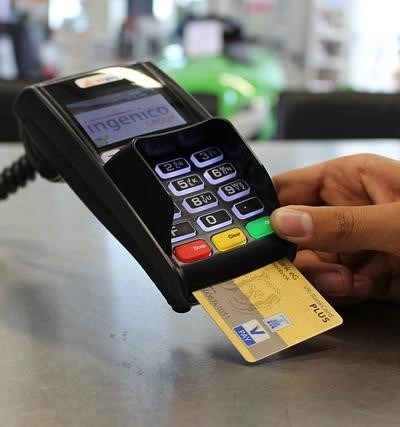My exploration of non-verified by Visa (Non-VBV) cards began out of a need for alternative payment methods, particularly for online payments where traditional debit and credit cards felt too exposed. This journey led me through a landscape of prepaid cards, virtual cards, and other innovative financial technology (fintech) solutions.
Understanding Non-VBV Cards
Non-VBV cards, essentially non-bank-issued cards, represent a diverse group of payment instruments. They often lack the Verified by Visa (VBV) or Mastercard SecureCode (MSC) security protocols associated with standard debit and credit cards. This doesn’t automatically mean they’re insecure, but it does signify a different approach to transaction processing and card security. Key players in this space include various prepaid cards, virtual cards offered by digital wallets, and even some specialized debit cards from niche providers.
Prepaid Cards: A Stepping Stone
Prepaid cards were my initial foray. These cards are loaded with a specific amount of money and can be used for online payments and in-person purchases. The anonymity offered by some prepaid cards appealed to me, but the lack of robust fraud prevention features was a concern. I found that transaction limits and fees varied widely between providers.
Virtual Cards: Enhanced Flexibility
Virtual cards, often linked to digital wallets, provided a more secure and flexible option. These cards exist solely as digital representations, offering a layer of anonymity and improved security compared to physical prepaid cards. Their use in online payments is straightforward, and many platforms integrate seamlessly with popular fintech apps.
Exploring Alternative Payment Options
My journey also explored other alternative payment options. The ease and speed of online payments using these methods were appealing, but careful consideration of the security implications was essential. Understanding the specific security measures each provider implemented was key to making informed decisions.
Security and Privacy Concerns
While the anonymity offered by some non-VBV cards is attractive, it’s crucial to acknowledge the increased risk. Robust fraud prevention measures are often less comprehensive than those found on traditional bank-issued cards. Therefore, careful selection of providers and vigilant monitoring of transactions are vital.
My journey into the world of non-VBV cards has been enlightening. While they offer convenience and alternative payment options, particularly for anonymous payments, it’s vital to prioritize secure payments and understand the inherent risks. Thorough research and a cautious approach are essential when utilizing these financial instruments. The fintech landscape continues to evolve, offering innovative solutions, but responsible use remains paramount.
Navigating the Regulatory Landscape
The regulatory landscape surrounding non-verified, non-bank-issued cards is complex and varies significantly by jurisdiction. Understanding these regulations is crucial, especially when dealing with international transactions. While prepaid cards and virtual cards often fall under existing financial regulations, the specific requirements for their issuance and operation can differ dramatically. This necessitates careful due diligence before selecting a provider, particularly when considering cross-border online payments.
The Future of Non-VBV Cards
The future of non-VBV cards is intertwined with the broader evolution of financial technology (fintech). As fintech companies continue to innovate, we can expect to see further advancements in both the security and functionality of alternative payment options. Improved fraud prevention mechanisms, coupled with more sophisticated transaction processing systems, will likely increase the adoption of these cards. The integration of non-bank-issued cards with digital wallets is already significantly enhancing the user experience for online payments.
Balancing Anonymity and Security
The inherent tension between the desire for anonymous payments and the need for secure payments remains a central challenge. While some users appreciate the privacy afforded by non-verified cards, particularly for online purchases where revealing personal financial details is a concern, the lack of robust fraud prevention features in some cases presents a significant risk. The onus is on both providers and users to strike a balance. Providers must invest in robust security measures, while users must remain vigilant and employ best practices to mitigate potential threats. The use of strong passwords, multi-factor authentication where available, and regular monitoring of transactions are crucial.
Comparing Non-VBV Cards to Traditional Options
Compared to traditional debit cards and credit cards, non-VBV cards often offer different trade-offs. While they may lack the extensive fraud prevention measures and consumer protections associated with bank-issued cards, they can provide greater anonymity and flexibility for certain types of transactions. Ultimately, the best choice of payment method depends on individual needs and risk tolerance. For high-value transactions or recurring online payments, the added security of verified cards might be preferable. However, for smaller, less frequent purchases, the convenience and anonymity of non-verified, non-bank-issued cards may be more appealing.
The world of non-verified, non-bank-issued cards offers a range of payment methods, from prepaid cards to virtual cards, providing alternative payment options for online payments. However, a reasoned and cautious approach is necessary. Understanding the intricacies of transaction processing, card security, and the regulatory landscape is crucial for safe and responsible use. By carefully weighing the benefits of anonymity against the risks associated with reduced fraud prevention, users can make informed decisions that align with their individual needs and risk tolerance. The ongoing development of fintech solutions will continue to shape the future of this evolving landscape.


This article provides a valuable overview of Non-VBV cards and their place in the broader landscape of online payment methods. The author
A well-structured and informative piece. The author effectively communicates the complexities of Non-VBV cards without getting bogged down in technical jargon. The exploration of prepaid and virtual cards as distinct categories is helpful, and the emphasis on security considerations is crucial for anyone considering using these less traditional payment methods. I found the personal anecdotes particularly engaging.
This is a great introduction to the world of Non-VBV cards for those unfamiliar with alternative payment options. The author successfully balances a clear explanation of the technology with practical examples and personal experiences. The article effectively highlights the need for careful consideration of security when using these cards, making it a valuable resource for anyone looking to expand their payment method choices.